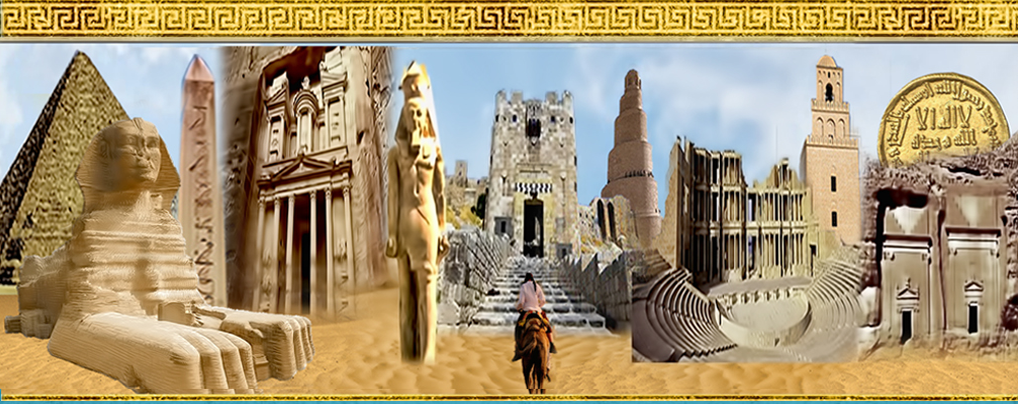Journal of the General Union of Arab Archaeologists

Abstract
دلالات تصوير الأسرى العراة في مصر القديمة وبلاد العراق القديم [دراسة مقارنة]
[AR] تهدف هذه الدراسة إلى مناقشة دلالات تصوير الأعداء العراة في كل من مصر القديمة والعراق القديم. وتقتصر على تمثيل الأعداء العراة من الرجال فقط دون الأطفال أو النساء. ويكمن السبب في اختيار هذا الموضوع إلى إلقاء المزيد من الضوء على أوجه الشبه والاختلاف بين تمثيل الأسرى العراة، وكذلك المقارنة بين مفهوم تجريدهم من ملابسهم في مناظر كلتا الحضارتين. وقد ناقشت الدراسة أهم هذه التمثيلات واستعرضتها للإجابة على كثير من الأسئلة التي تدور حول هذا الموضوع ، ومنها: ما الحضارة التي ظهر هذا النمط في مناظرها أكثر من الأخرى هل هي مصر القديمة أم العراق القديم؟ وهل العري مرتبط بمفهوم عقوبة الأسرى أو العصاة بشكل عام؟ وإلى أي مدى يرتبط العري بمفهوم العار أو الخزي والمهانة بشكل عام وبخاصة للعدو المهزوم؟ وما مدى ارتباط العري بفكرة الموت؟ وهل اقتصر تمثيل الأسرى وقد جردوا من ملابسهم في مناظر مصر القديمة والعراق القديم على الأعداء الأحياء فقط، أم على الأموات منهم، أم كلاهما الأعداء الأحياء والأموات؟ وقد استنتجت هذه الدراسة أن مناظر الأسرى العراة من الأعداء قد مثلت في العراق القديم أكثر منها في مصر القديمة، كما أن العري قد ارتبط بمفهوم العقاب لتعميق إحساس الخزي والعار وامتهان الأعداء. ولم يقتصر تمثيل الأسرى العراة الأموات دون الأحياء، بل مُثّل كلاهما عراة ، وإن زادت أمثلة مناظر الأسرى الموتى العراة أو المحكوم عليهم بالموت، حيث اقترن تمثيل الأسرى العراة الموتى مع الإعدام بطرق عديدة غاية في القسوة، كالسلخ والوضع على الخازوق، وبخاصة في مناظر العراق القديم في العصر الآشوري الحديث.
[En] This study focuses on the iconography of depicting naked enemies in the ancient Egyptian and Iraqi civilizations. It is limited to the representation of naked, male enemies only, not women or children. The reason for choosing this topic is to shed more light on the similarities and differences in depicting scenes of naked captives and the concept of stripping prisoners of their clothes in both civilizations. This study also discusses and reviews the most important representations to answer many questions. For instance, which civilization portrays this motif more than ancient Egypt or Mesopotamia? Is nudity associated with the punishment of enemies, captives, prisoners, or the disobedient in general? To what extent is nudity generally related to the concept of shame concerning the defeated one or the enemy? To what extent is nudity related to the notion of death? Is stripping prisoners of their clothes in scenes from ancient Egypt and Iraq restricted to living enemies, the dead among them, or both? The study concludes that scenes of naked enemies in Mesopotamia occur more frequently than in ancient Egypt and that nudity is linked to the concept of punishment to deepen the sense of shame, disgrace, and humiliation of enemies. Moreover, the representation of nakedness includes dead and living enemies in both civilizations. However, depictions of dead, naked captives are also combined with cruel methods of execution, such as skinning and impalement, especially in Neo-Assyrian scenes.
Recommended Citation
Abdulghani, Fawziah
(2024)
"THE ICONOGRAPHY OF DEPICTING NAKED ENEMIES IN ANCIENT EGYPT AND MESOPOTAMIA: A COMPARATIVE STUDY,"
Journal of the General Union of Arab Archaeologists: Vol. 9:
Iss.
1, Article 1.
Available at:
https://digitalcommons.aaru.edu.jo/jguaa/vol9/iss1/1
Included in
Historic Preservation and Conservation Commons, History Commons, History of Art, Architecture, and Archaeology Commons

